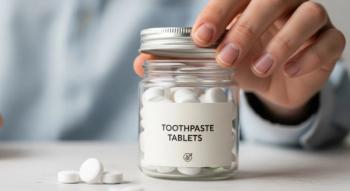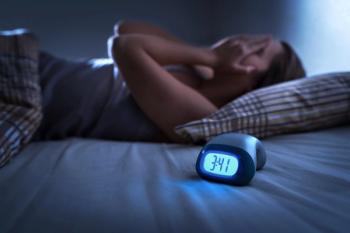
- July 2022
- Volume 88
- Issue 7
OTC Case Studies: Rhinitis
How would you handle these patient questions?
Case 1: Astepro
Q: SK is a 32-year-old woman who recently moved into an apartment building with carpeting. She has experienced symptoms of rhinitis in the past, including a runny and stuffy nose, along with itching and sneezing. SK has used loratadine 10 mg daily in the past during allergy season when experiencing rhinitis symptoms. She said it is unusual to experience symptoms outside allergy season and thinks that the carpeting and ventilation in her new building may play a part in triggering the rhinitis. SK has taken loratadine for the past week, but it has not relieved her symptoms. She used a prescription nasal antihistamine spray a few years ago that was helpful, but her physician is not in office to prescribe the medication tonight. What OTC medication options should the pharmacist recommend?
A: SK has taken azelastine (Astepro) in the past. As of early 2022, azelastine is the only FDA-approved OTC intranasal antihistamine. In some studies, intranasal antihistamines have shown greater efficacy and safety compared with oral antihistamines. Additionally, intranasal azelastine has demonstrated relief when oral antihistamines fail.1-3
Instruct SK to initiate OTC azelastine and use 2 sprays intranasally once a day or 1 spray in each nostril twice a day for a maximum of 4 sprays per day. Although azelastine is generally well tolerated, common adverse effects include a bitter taste in the mouth, headaches, and a runny nose. Some patients experience sedation, similar to some oral antihistamines, with azelastine, so SK may want to use the medication at bedtime. Instruct her to avoid alcohol and other sedative medications while taking azelastine.1,2
Case 2: Nasal Administration Technique
Q: SK calls the pharmacy later in the day to inquire about the antihistamine nasal spray and wants to ensure she is using it correctly. She asks to be walked through appropriate nasal spray administration technique. What guidance should the pharmacist offer?
A: Instruct SK to first clear her nasal passages and always wash her hands before and after use of the nasal spray. For the first use, remove the blue plastic safety clip. Next, prime the spray by spraying it into the air 6 times or until a fine spray appears. Then gently depress 1 side of the nose with a finger to close off the nostril. Tilt head down, insert the tip of the bottle into the open nostril, and hold the bottle upright while aiming the spray tip toward the back of the nose. Sniff deeply while depressing the pump once, keeping the head tilted forward and down. Repeat in the other nostril using the same steps. Clean the tip of the spray with a dry tissue. Wait a few minutes after using the medication before blowing the nose. Prime the spray every time the device is cleaned and if it is out of use for 3 or more days.1
Case 3: Systemic Nasal Decongestants
Q: RP is a 34-year-old man with nasal congestion. He shares that he is otherwise healthy but has not been able to treat his nasal congestion for the past few days. RP has tried a saline nasal spray and some nonpharmacologic measures, including nasal strips (Breathe Right) and humidifiers. He wants to know about other options, including oral tablets, that are nasal decongestants. What information should the pharmacist share with RP?
A: Decongestants treat nasal and sinus congestion via stimulation of α-adrenergic receptors. This leads to the constriction of blood vessels and, therefore, a decrease in the edema and swelling of the sinus vessels. Nonprescription systemic decongestants include phenylephrine and pseudoephedrine. Overall, phenylephrine has low bioavailability, and pseudoephedrine is well absorbed. Although approved for short-term use for the temporary relief of congestion, the decongestants have adverse effects that may be worse with overuse. These can include anxiety, elevated blood pressure, insomnia, and tachycardia. RP can purchase pseudoephedrine as a single agent or in combination with some antihistamines or antipyretics behind the counter. Phenylephrine, on the other hand, can be purchased over the counter. Instruct him to follow the dosing information on the package and avoid surpassing the maximum daily dose of 60 mg for phenylephrine and 240 mg for pseudoephedrine.4
Case 4: Nonpharmacologic Therapy for Infants
Q: NK calls to inquire about care for his infant nephew, MK, whom he is babysitting. The infant’s mother gave NK a bulb syringe to use to relieve the child’s stuffy nose, but he does not know how to use it. What information can the pharmacist provide?
A: NK is correct to employ nonpharmacologic strategies to relieve his nephew’s congestion because most medications cannot be used for children younger than 2 years. Advise NK to first hold MK in an upright position to enhance nasal drainage. Because the accumulation of mucus would interfere with MK’s eating and sleep routine, it is important to vacate the nasal passages. Instruct NK to first squeeze the large end of the bulb before inserting the tip of the syringe gently into nose. Next, he should slowly release the compression pressure in an effort to draw out fluid. Following the release of pressure, NK should remove the syringe from MK’s nose, compress the bulb into a napkin or towel to expel the collected fluid and mucus, and then repeat the steps on the other side.5
About the Author
Ammie Patel, PharmD, BCACP, is a clinical assistant professor of pharmacy practice and administration at Ernest Mario School of Pharmacy at Rutgers, The State University of New Jersey in Piscataway, and an ambulatory care specialist at RWJBarnabas Health Primary Care in Shrewsbury and Eatontown, New Jersey.
Rupal Mansukhani, PharmD, FAPhA, CTTS, is a clinical associate professor at Ernest Mario School of Pharmacy at Rutgers, The State University of New Jersey in Piscataway, and a transitions-of-care clinical pharmacist at Morristown Medical Center in New Jersey.
References
1. Common colds: protect yourself and others. CDC. Updated November 29, 2021. Accessed June 7, 2022. https://www.cdc.gov/features/rhinoviruses/
2. Jacobs SE, Lamson DM, St George K, Walsh TJ. Human rhinoviruses. Clin Microbiol Rev. 2013;26(1):135-162. doi:10.1128/CMR.00077-12
3. Cohen S, Janicki-Deverts D, Doyle WJ. Self-rated health in healthy adults and susceptibility to the common cold. Psychosom Med. 2015;77(9):959-968. doi:10/1097/PSY.00000000000232
4. Part 341 - cold, cough, allergy, bronchodilator, and antiasthmatic drug products for over-the-counter human use. Code of Federal Regulations. Updated June 21, 2022. Accessed June 15, 2022. https://www.ecfr.gov/current/title-21/chapter-I/subchapter-D/part-341
5. Suctioning the nose with a bulb syringe. Cincinnati Children's Hospital Medical Center. Updated March 2019. Accessed June 24, 2022. www.cincinnatichildrens.org/health/info/newborn/home/suction/htm
Articles in this issue
over 3 years ago
National Practitioner Data Bank Aims to Reduce Malpracticeover 3 years ago
Pet Peeves: July 2022over 3 years ago
July 2022: Generic Product Newsover 3 years ago
Pharmacists Can Help Manage Patients With Parkinson Diseaseover 3 years ago
Quviviq From Idorsia Pharmaceuticalsover 3 years ago
July 2022: Rx Product Newsover 3 years ago
Know Your Salary Rangeover 3 years ago
Help Patients Use Inhalers Properlyover 3 years ago
Illinois Legislature Empowers Pharmacistsover 3 years ago
Board’s Licensure Revocations Are Upheld on AppealNewsletter
Stay informed on drug updates, treatment guidelines, and pharmacy practice trends—subscribe to Pharmacy Times for weekly clinical insights.













































































































































































































